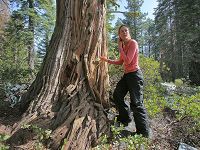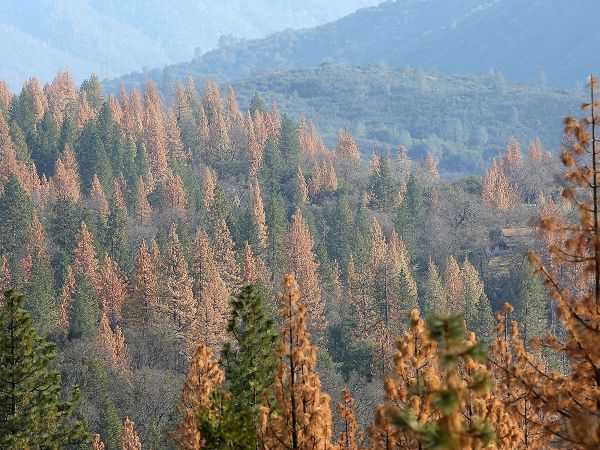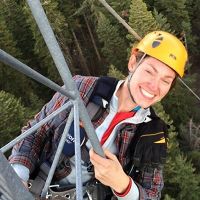Living with less snow in the West: What Global Warming means for our water supplies
15 Apr 2016
News Source: The Desert Sun
The story in The Desert Sun, shows insight into the research at SSCZO and efforts being made to understand the shift in the Sierra snowpack.
An article in The Desert Sun, "Living with less snow in the West: What Global Warming means for our water supplies" by Ian James, is part 3 in his series on Climate Change. The story, with wonderful imagery and a video by Jay Calderon, tells of the importance of the role the Sierra snowpack has played as a water reservoir for downstream users in spring and summer seasons. To determine how climate change is affecting this snowpack, James spoke with Southern Sierra CZO’s Erin Stacy, Melissa Thaw and Roger Bales about their monitoring and research efforts. In general, effects they have seen are a high rain/snow transition, less and decreasing yearly snowpack, faster and earlier melting, and tree die off. Beyond the science, the piece also discusses a local farm’s actions to return what to the aquifer.
An excerpt from:
Living with less snow in the West: What Global Warming means for our water supplies
By Ian James & photographs by Jay Calderon
Erin Stacy, a scientist with the Sierra Nevada Research Institute at the University of California, Merced, manages research sites where instruments record information about the snowpack, water and the ecology of the forest.
(Photo: Jay Calderon/The Desert Sun)
"...The changes in the timing of runoff are projected to be drastic. And as temperatures rise, more of the snow and rain that falls will evaporate instead of running off. Scientists expect those changes to shrink the average flows of streams and rivers.
At the research site in the Sierra Nevada, located more than 6,000 feet up in the mountains northeast of Fresno, Stacy was at work along with doctoral student Melissa Thaw, who was collecting water samples from the soil beneath a large incense cedar.
Her research involves using isotope “signatures” in the water to track how it moves through the soil and where trees and shrubs are taking up water. Thaw is interested in learning more about how climate change will affect the water and the ecology of the forest, and she is focusing on the transition zone between rainfall and snow.
As the climate warms, it will push this transition zone higher into the mountains, moving the snowline upslope. Thaw said that points to a need to anticipate the effects on water supplies, while also taking steps to slow global warming.
“The mountains are the world’s water towers, so when the water can be held up in the Sierra Nevada later in the year, we have a longer amount of time where we have runoff coming down into the reservoirs,” she said, standing among boulders and snow-covered manzanita bushes.
“I think being aware that these water resources are changing pretty fast and that they’re limited is important,” she said. As for the scale of the threats posed by climate change, she said: “It’s super important, and I don’t think people are doing enough....”
To read the full story and the rest of the series please visit The Desert Sun.
Erin Stacy, a scientist with the Sierra Nevada Research Institute at the University of California, Merced, manages research sites where instruments record information about the snowpack, water and the ecology of the forest.
(Photo: Jay Calderon/The Desert Sun)
Portions of the Sierra National Forest are filled with dead and dying ponderosa pines. Warm winters and severe drought have enabled bark beetles to flourish in forests across California, leaving vast areas in the mountains covered with orangish-brown dead trees.
(Photo: Jay Calderon/The Desert Sun)
News Source:
READ MORE from The Desert Sun >>
News Category:
RESEARCH |
INFRASTRUCTURE |
PEOPLE
People Involved
CZO
-
Sierra, STAFF
-
Sierra, GRAD STUDENT
-
Sierra, INVESTIGATOR
Discipline Tags and CZOs
Hydrology
Soil Science / Pedology
Biology / Ecology
Climatology / Meteorology
All Disciplines
Sierra
Explore Further






